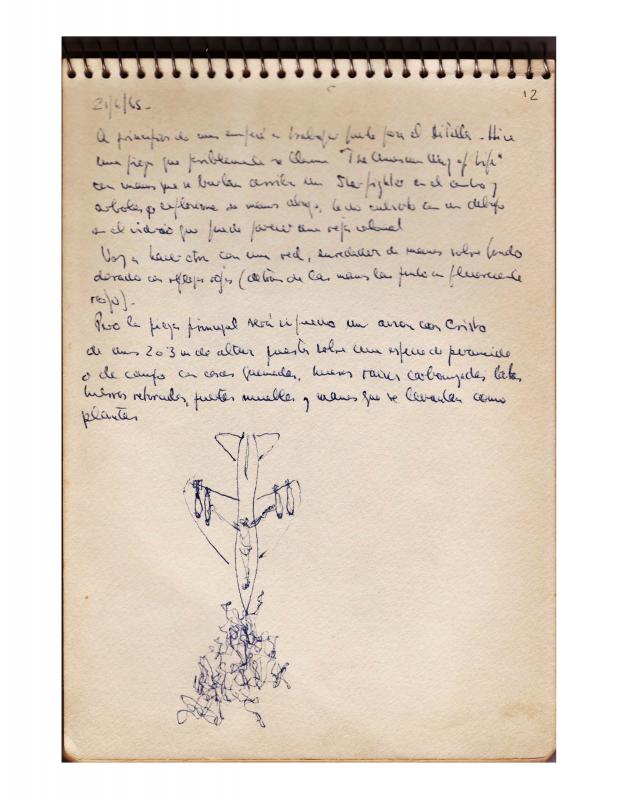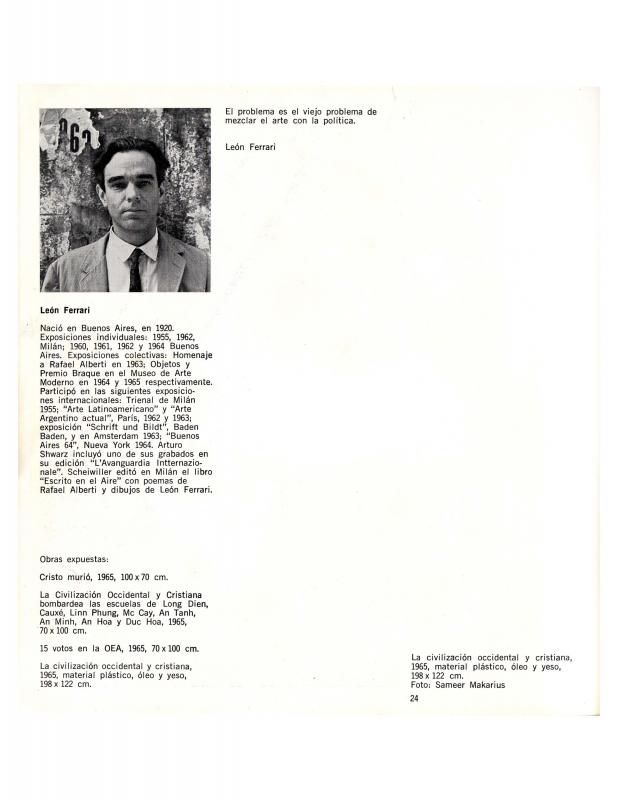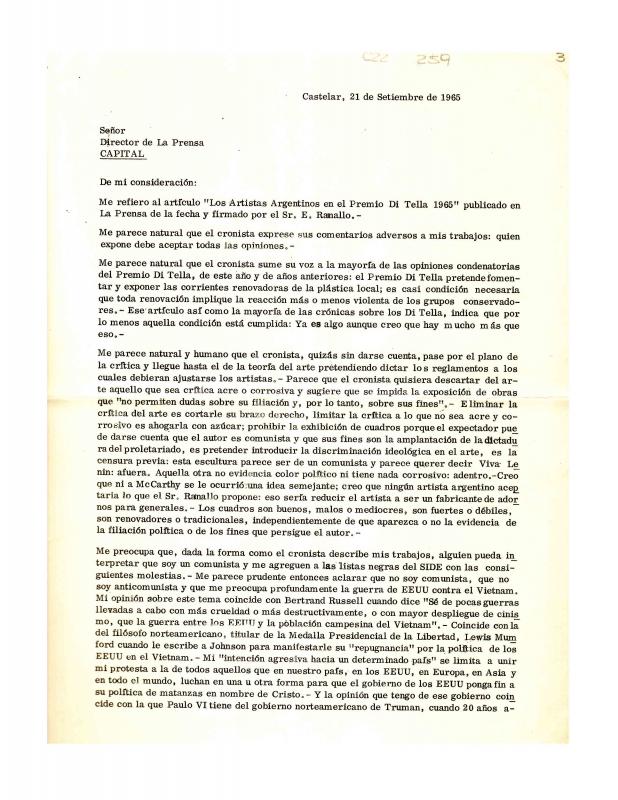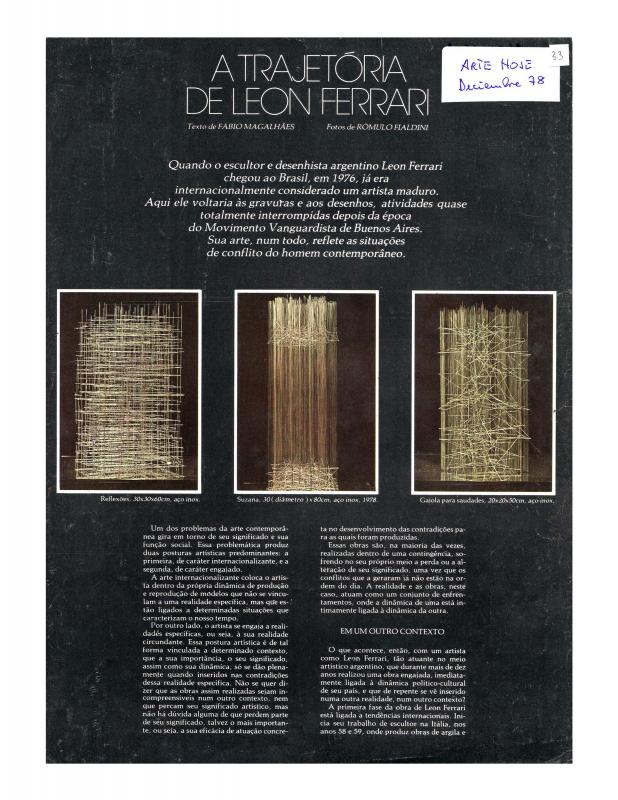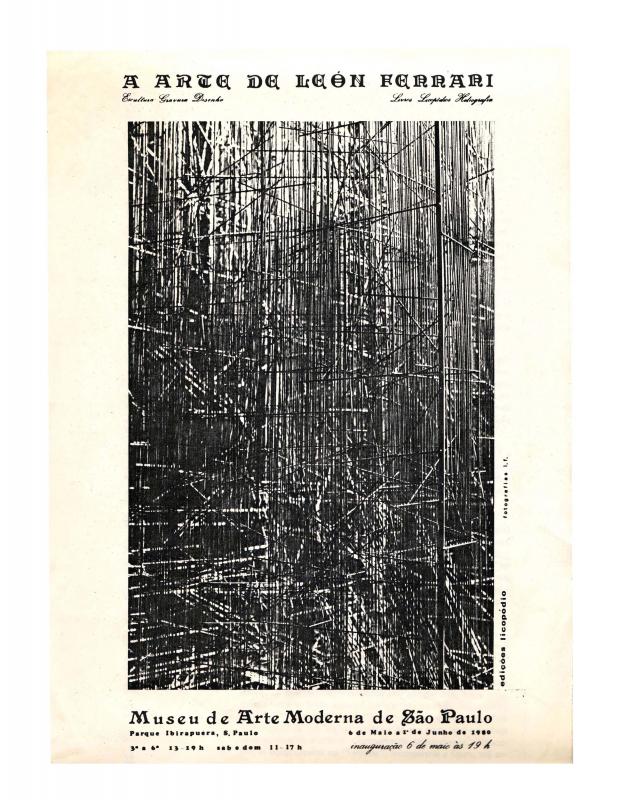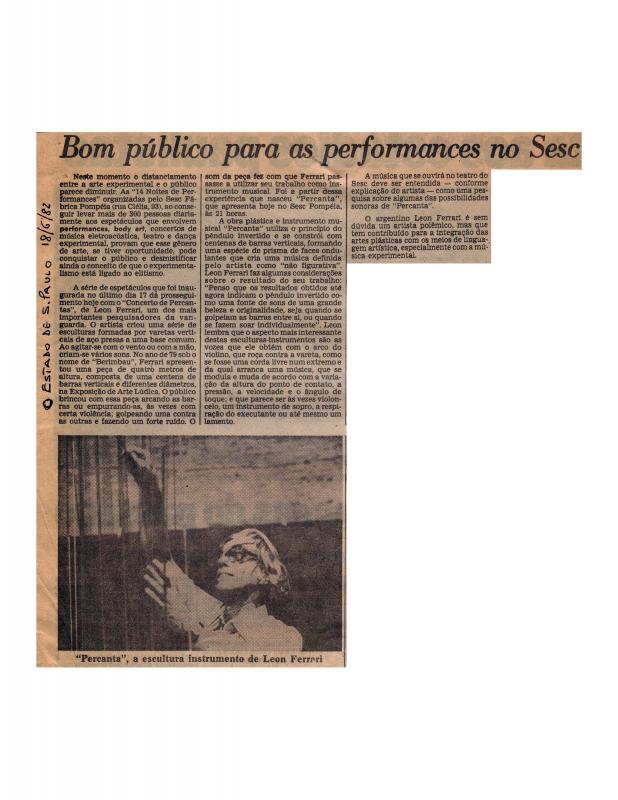León Ferrari (Buenos Aires, 1920–2013), son of the artist and architect Augusto César Ferrari, began later in life to dedicate himself to visual arts. This allowed him to serve as a bridge between the late-1950s artist generation and the young vanguards of the 1960s. His first works were ceramic sculptures; then, León experimented with wire structures, visual writing, and collages. What stood out from his work were two branches: a political line that strongly condemned military dictatorships, American imperialism, and Catholic Church ideology, as well as an Informalist approach to conceptual drawing or even within the Surrealist tradition. His 1965 object-montage, titled Civilización Occidental y Cristiana [Western Christian Civilization], was censured at the Centro de Artes Visuales del Instituto Torcuato Di Tella [the Torcuato Di Tella Institute’s Visual Arts Center] (see documents 743800, 744085, and 761879). Ferrari participated intensely in the 1960s events of political conceptualism (in particular, at the event Tucumán Arde [Tucumán Is Burning], 1968). In response to the most recent Argentine military dictatorship’s repressive regime (1975-83), he went into exile in Brazil, where he explored a variety of ideas, such as formalism and the reproducibility of a work, as well as the spatial relationship between sculpture and music (see documents 743960, 744392, and 743870, among others). Since 1984, he has exhibited again in Buenos Aires, where Ferrari again established himself definitely.
This letter is part of a set of correspondence between the Argentinean artist León Ferrari and the Spanish writer Rafael Alberti (Cádiz, 1902–1999). Alberti lived the greater part of his exile in Buenos Aires; from 1963, he established himself in Rome. They published together: Rafael Alberti, Escrito en el aire: 9 poemas inéditos de Rafael Alberti para 9 dibujos de León Ferrari [Written in the Air: 9 unpublished poems by Rafael Alberti for 9 drawings by León Ferrari] (Milan: All´insegna del pesce d’oro, 1964).
This is an important document because it shows one of the initial contacts made between Rafael Alberti and León Ferrari, after the former’s departure from Buenos Aires into exile (see document no. 749168). It signaled the beginning of a bond across distance that was personally established in Argentina and inspired the work in tandem Escrito en el aire [Written in the Air].
The identities of the art dealers mentioned in Alberti’s letter, Schwarz and Passoni, are unclear; but most probably, regarding the first, he was referring to the Galeria Arturo Schwarz (Milan). During the 1960s, Aldo Passoni collaborated as an art critic on L´Avanti in Milan; perhaps Alberti was referring to him in the second case.

